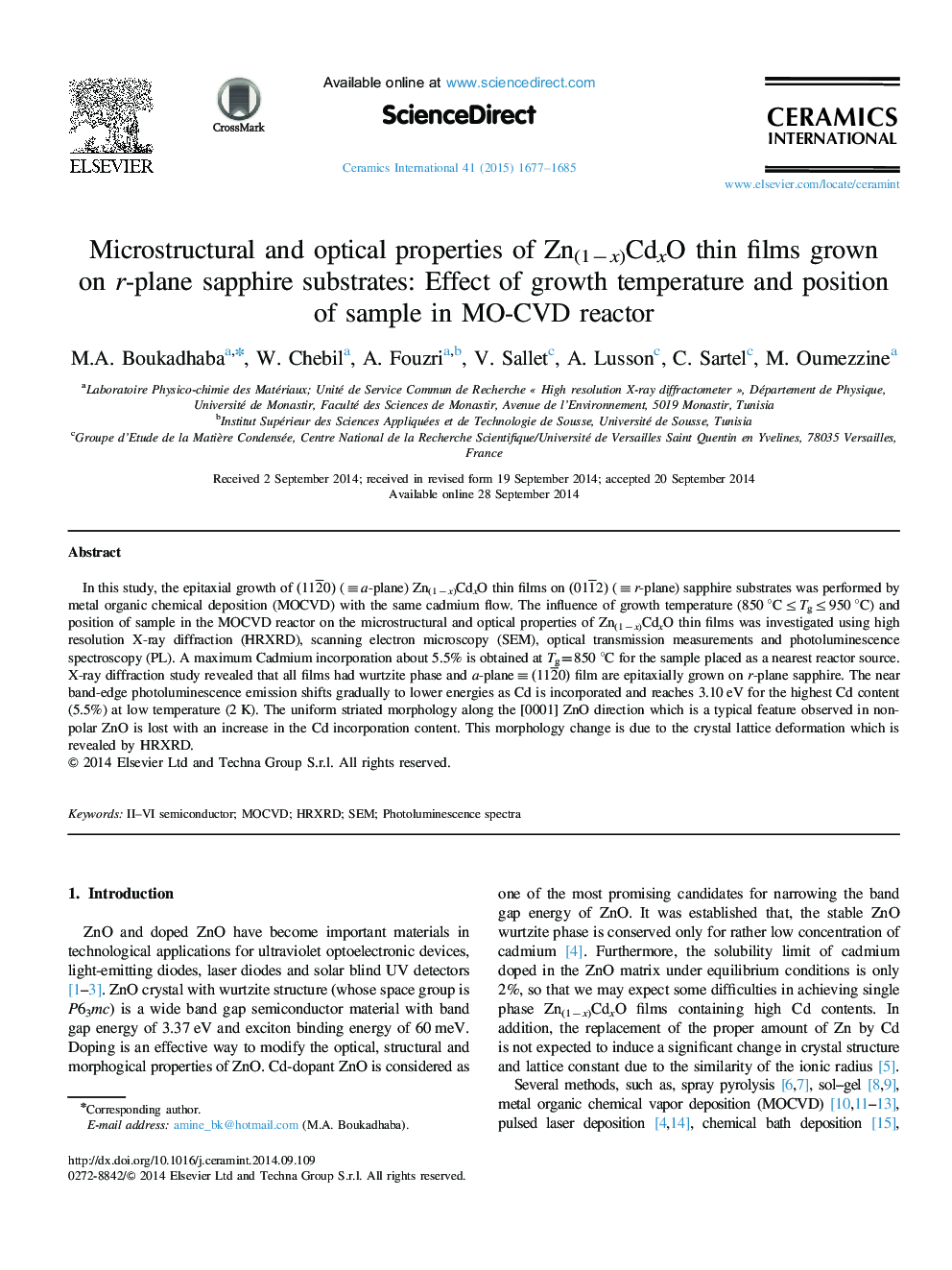| Article ID | Journal | Published Year | Pages | File Type |
|---|---|---|---|---|
| 1460874 | Ceramics International | 2015 | 9 Pages |
In this study, the epitaxial growth of (112¯0) (≡a-plane) Zn(1−x)CdxO thin films on (011¯2) (≡r-plane) sapphire substrates was performed by metal organic chemical deposition (MOCVD) with the same cadmium flow. The influence of growth temperature (850 °C≤Tg≤950 °C) and position of sample in the MOCVD reactor on the microstructural and optical properties of Zn(1−x)CdxO thin films was investigated using high resolution X-ray diffraction (HRXRD), scanning electron microscopy (SEM), optical transmission measurements and photoluminescence spectroscopy (PL). A maximum Cadmium incorporation about 5.5% is obtained at Tg=850 °C for the sample placed as a nearest reactor source. X-ray diffraction study revealed that all films had wurtzite phase and a -plane≡(112¯0) film are epitaxially grown on r-plane sapphire. The near band-edge photoluminescence emission shifts gradually to lower energies as Cd is incorporated and reaches 3.10 eV for the highest Cd content (5.5%) at low temperature (2 K). The uniform striated morphology along the [0001] ZnO direction which is a typical feature observed in non-polar ZnO is lost with an increase in the Cd incorporation content. This morphology change is due to the crystal lattice deformation which is revealed by HRXRD.
